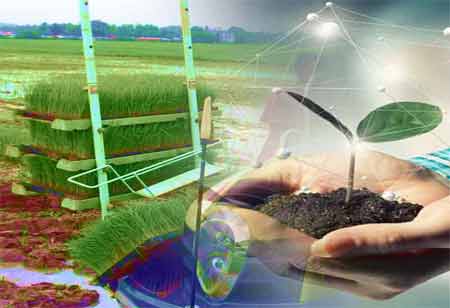Thank you for Subscribing to Food Business Review Weekly Brief
Transforming the Restaurant Sector: The Impact of Food Safety Technology
In today's fast-paced world, restaurant managers use technology to ensure a clean and safe culinary environment.

By
Food Business Review | Monday, April 01, 2024
Stay ahead of the industry with exclusive feature stories on the top companies, expert insights and the latest news delivered straight to your inbox. Subscribe today.

Restaurants are keeping a clean and hygienic food environment with innovative food safety technology.
FREMONT, CA: In today's fast-paced world, restaurant managers use technology to ensure a clean and safe culinary environment. It provides insights and resources for restaurant managers to select appropriate technological solutions, ensuring customer safety and company success.
The Development of Technology for Food Safety
Since ancient times, the food and beverage business has been concerned with food safety, employing methods like smoking, drying, and salting to keep food from spoiling. Modern food safety technology emerged in the late 1800s, with automation, pasteurization, refrigeration, HACCP, and other major advancements. Louis Pasteur invented pasteurization. This process includes heating food to destroy bacteria and pathogens and lower the risk of foodborne sickness. The early 20th century saw the invention of refrigeration, which increased product shelf life and decreased spoiling. The industry extensively uses HACCP, which NASA created, to identify any dangers.
Checkout This : Top Food and Beverages Marketing Companies
Restaurants' Top Food Safety Technologies
Innovative food safety technology is being used by restaurant management more often to enhance operations and safeguard patrons. These technologies include digital software tools, Bluetooth thermometers, Internet of Things sensors, allergy detection devices, automated temperature monitoring systems, and smart sanitization equipment. Food temperatures can be remotely monitored via Bluetooth thermometers, and managers can be informed of any deviations from safety regulations by IoT sensors that track current circumstances. Automated temperature monitoring systems notify workers when food temperatures deviate from permissible limits, and digital tools include task management, allergen tracking, and automatic temperature monitoring.
Restaurant Managers' Function in Using Technology for Food Safety
To ensure food safety in their facilities, restaurant managers play a critical role. They should follow industry standards and government regulations, maintain appropriate documentation and record-keeping for audits and compliance purposes, regularly monitor food safety conditions, maintain safe storage conditions, practice proper food handling and preparation, and offer ongoing employee training and food safety education. Restaurant management can enhance food safety procedures and optimize operations by utilizing appropriate systems and food safety technologies. For all restaurant managers, ensuring food safety is paramount.
The advantages of using food safety technology in dining establishments
Restaurants may benefit greatly from food safety technology, such as increased productivity, regulatory compliance, improved customer service, and data management. Tasks related to food safety can be automated to save time and improve eating experiences. It lowers the possibility of penalties and legal repercussions. It also shows a dedication to quality and safety, which enhances client loyalty and happiness. Generally, food safety technology improves customer happiness and business operations.






